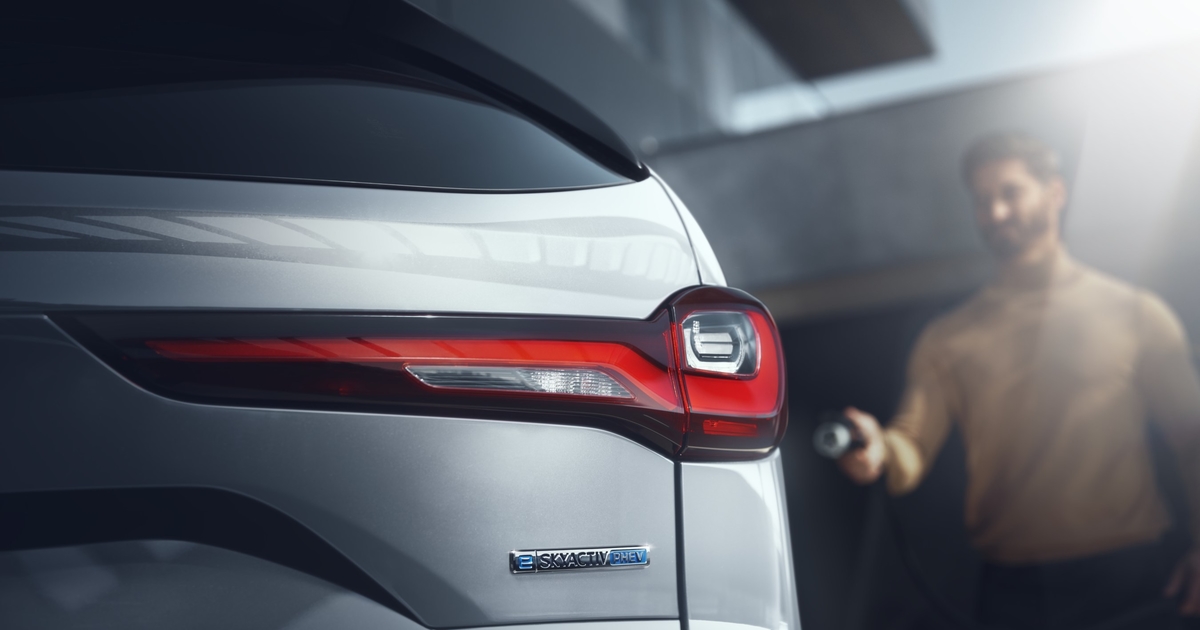
When Mazda’s larger three-row CX-90 crossover goes on sale this year, it will be the brand’s first offering of a plug-in hybrid powertrain in the U.S.
Mazda told dealers at their make meeting Friday that growing its PHEV business in the U.S. is a priority, and it will happen before the brand commits to pure battery-electrics like many rival automakers.
Jim Scherer, chairman emeritus of the Mazda National Dealer Advisory Council, told Automotive News outside the meeting that Mazda’s plan to focus on plug-ins first is more aligned with current market demand.
“I think introducing PHEVs at the time that we’re going to fits our brand perfectly,” said Scherer, owner of Scherer Mazda in Peoria, Ill.
“Most of our vehicles right now are set up to have a PHEV segment, and as we just learned, we will get up to 25 percent of production,” Scherer said of the U.S. market.
The CX-90 and CX-70 will have PHEV variants, Scherer said. “But looking at Mazda’s future plans for our other models, they will have that availability as well – not every model, but most of them that we offer now.”
The CX-90 will ride on Mazda’s larger new rear-wheel-drive platform with expanded cargo and passenger space. It will replace the current CX-9 in the lineup, which has one of the smallest third rows in the segment.
The CX-70 five-seater is expected to arrive late in 2023 as a 2024 model.
Scherer said “one can assume” the CX-50 compact crossover – sold alongside Mazda’s popular CX-5 – also is likely to get a hybrid powertrain, but he did not specify whether it will be a plug-in. The CX-50 is built at the Mazda Toyota Manufacturing plant in Huntsville, Ala.
If the CX-50 offers a hybrid powertrain, it will likely be the Toyota system that could also go into the Mazda3 compact sedan and CX-30 subcompact crossover with which it shares a platform.